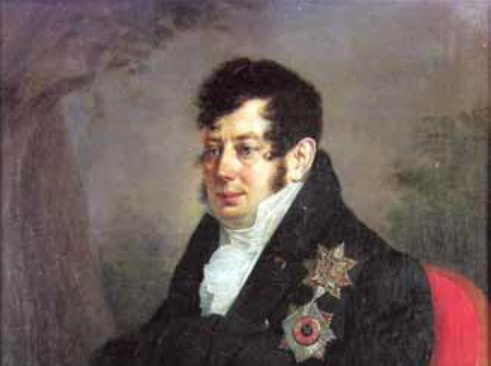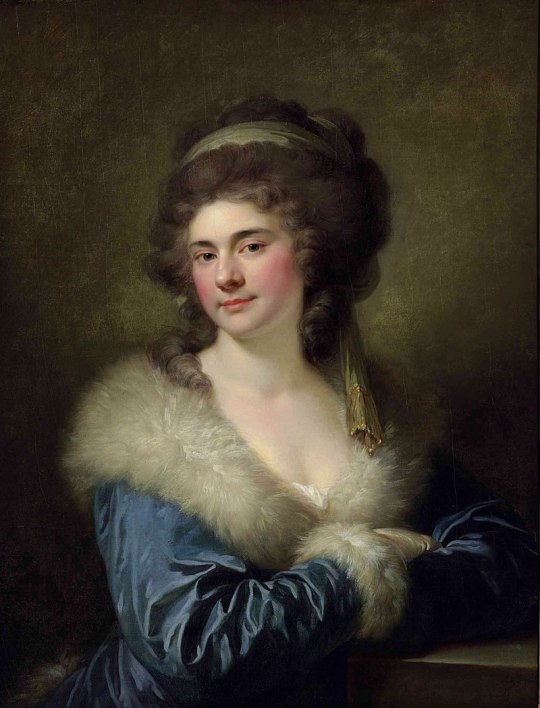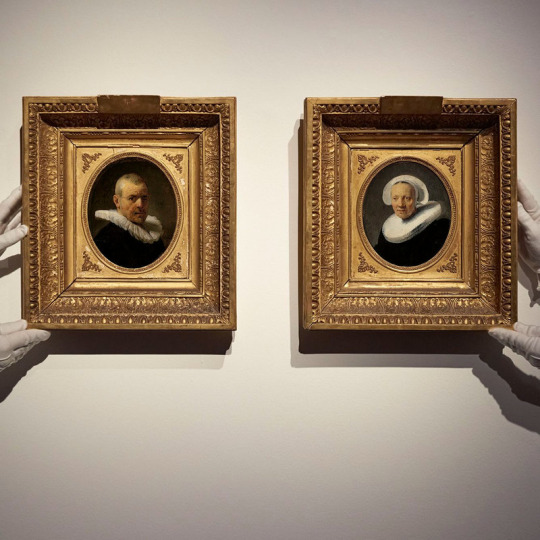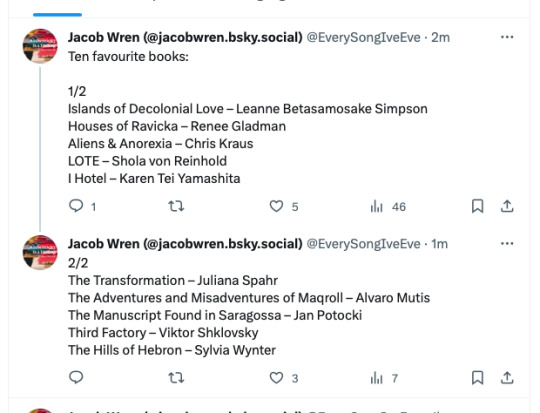#jan potocki
Text

Look at my Napoleonic horror author….
#Jan Potocki#Potocki#The Manuscript Found in Saragossa#napoleonic#history#french literature#polish literature#Poland#early 19th century#19th century literature#duchy of Warsaw#werewolf#werewolves#lycanthropy#fairytales#wikipedia#my posts#napoleonic era
28 notes
·
View notes
Text

More vampire stories from the Napoleonic era
From Manuscrit trouvé à Saragosse (The Manuscript Found in Saragossa), by Jan Potocki, published between 1805-1815
#Jan Potocki#Potocki#Manuscrit trouvé à Saragosse#vampires#horror stories#horror#french literature#vampire stories#vampire#napoleonic era#napoleonic#first french empire#french empire#French lit#France#Poland#polish literature#The Manuscript Found in Saragossa#The Saragossa Manuscript#Spain#19th century#19th century literature#1800s literature#paranormal
18 notes
·
View notes
Text

Foreign fantasy: Gothic and Romantic eras
This chart of fantastic fiction written in languages other than English from the 1770s to the 1870s is a sort of companion to my earlier list of Gothic romances. For more titles and links to Goodreads and Wikipedia, see the full version of this list on my website.
#book recommendations#book recs#book list#gothic#gothic romance#gothic novel#horror literature#weird fiction#gothic fiction#horror fiction#fantastique#e.t.a. hoffmann#theophile gautier#honore de balzac#nikolai gogol#comte de lautréamont#jan potocki#book reccs#reading list#literature#classic books#classic literature
46 notes
·
View notes
Text
«El final d'un ambiciós als homes sempre els fa molt d'efecte. És una gran caiguda, i això els commou i sorprèn.»
~Manuscrit trobat a Saragossa, de Jan Potocki~
1 note
·
View note
Text
Jan Potocki (1761-1815)
Het is vandaag 205 jaar geleden dat de Pools-Russische schrijver Jan Potocki thuis in Oeladovka zelfmoord pleegde.
Continue reading Untitled

View On WordPress
0 notes
Text







#Rembrandt#Jan Willemsz van der Pluym#Jaapgen Carels#Dominicus van der Pluym#Cornelia van Suytbroec#Christie’s#Marten ten Hove#Count Vincent Potocki#Baron d’Ivry#James Murray#Henry Pettifer#Rijksmuseum#paintings#art#Rembrandt Harmenszoon van Rijn#Dutch masters#Dutch Golden Age
28 notes
·
View notes
Text
Definicja polityki i dobrego wyboru według Jana Pawła II
Wspólnota polityczna istnieje ze względu na dobro wspólne, w którym uzyskuje pełne usprawiedliwienie i znaczenie i z którego czerpie pierwotne, właściwe sobie prawo
– czytamy w konstytucji Gaudium et spes. I to jest oficjalne nauczanie Kościoła.
Naród ma prawo urządzać sobie świat po chrześcijańsku jeśli jest i chce być chrześcijański i ma do tego prawo, bo respektuje prawo naturalne. To jest…

View On WordPress
#Gaudium et spes#Jan Paweł II Wielki#Kodeks Prawa Kanonicznego#Nauczanie społeczne Jana Pawła II#nauka społeczna Kościoła#prof. Andrzej Potocki OP
0 notes
Note
I have two questions!
1 - Have you read all ASOIAF books? If yes, which is your favorite?
2 - What are your favorites books and why?
Thanks in advance ☺️❤️
I have! I think the third one was my favorite.
Some of my favorites books are:
Catch-22 by Joseph Heller
The Great Gatsby by F. Scott Fitzgerald
Dead Souls by Nikolai Gogol
To the Lighthouse by Virginia Woolf
Fathers and Sons by Ivan Turgenev
Oblomov by Ivan Goncharov
Pale Fire by Vladimir Nabokov
The Manuscript Found in Saragossa by Jan Potocki
The Epic of Gilgamesh
Invisible Man by Ralph Ellison
True Grit by Charles Portis
The Castle by Franz Kafka
The Narrative of the Life of Fredrick Douglass by Fredrick Douglass
Darkness at Noon by Arthur Koestler
Don Quixote by Miguel de Cervantes Saavedra
Sundiata by D. T. Niane
Paradise Lost by John Milton
Orlando Furioso by Ludovico Ariosto
Moby Dick by Herman Melville
At this point I'm just copying stuff down from a book review site I used to have. I used to read a whooooooooole lot, but I haven't much recently. :( Maybe I'll get back to it some day. My favorite author is Virginia Woolf. There's nothing more enjoyable than reading something by her—anything. When it comes to a put-together book, though, I think To the Lighthouse is her best. The others I've read are a joy to read, but the end, they don't necessarily come together as well as a book, if that makes sense. Now I haven't read them all. I've read To the Lighthouse, Mrs. Dalloway, Jacob's Room, and Orlando. If I were to recommend a second one, it would be Orlando, which is a real adventure to read. But her writing is unlike any other. I adore her work.
Lately I've been rereading some of my favorites aloud to my daughter after school. We read The 13 1/2 Lives of Captain Bluebear by Walter Moers, and we've now gone through four books by Tove Jansson: The Moomins and the Great Flood, Comet in Moominland, Finn Family Moomintroll, and Moominpappa's Memoirs. Next up is Moominsummer Madness before things get dark. lol But she's been enjoying them. I love Tove Jansson. She refused to write anything other than what she felt. (One of the reasons Finn Family Moomintroll was so odd. She felt a million eyes on her for perhaps the first time, and she was nervous. She settled back in after that.) There's also random things in there. In Moominpappa's Memoirs there's a drawing she did that's a send-up of Picasso's Guernica when Edward the Booble saves them at the end. I should put a picture of it, because I'm not sure anyone noticed... At least I can't find anything on the internet (probably searching wrong).
Anyway, that's some stuff.
32 notes
·
View notes
Text
manuscript found in saragossa
bad book. there's a reason some literature stays obscure and doesn't get much weight in the cultural unconscious. the thing about 1001 arabian nights is that (at least in the translation i was reading) it's full of crazy shit happening all the fucking time. there's magic. there's pornography. it really has it all. potocki gestures towards the gothic but he keeps circling the drain of spanish nobility engaging in courtly romance. i basically skimmed the last twenty days of stories because i couldn't fucking take it anymore and i just wanted to get to the end.
the most compelling chapters and the really interesting mysteries are set up in the first third of the book, where alphonse keeps coming back to the gallows and finding people who seem to have been bewitched by twin succubi not dissimilar to the mysterious moorish princesses that fucked him on the first night. then they join up with the gypsy band (jan's words, not mine) and the shit really starts to drag. it's like a polish how i met your mother where the gypsy chief (jan's words, not mine) is determined to tell the life story of every single person he's ever met - almost all of whom were spanish nobles who dealt with trials of passion and noblesse oblige.
the driving mystery of the story is the sheikh of gomelez, a mysterious muslim noble who seems to have a kingdom inside the spanish empire. the twist of the story is that the sheikh is real, the gomelez dynasty truly exists in a massive cave system in the mountains of spain, they really are fabulously wealthy, and they want to give it all to alphonse. the moorish princesses are real and as beautiful and fecund as you can imagine. all of the supernatural shit was a secret test of character for alphonse, who ultimately doesn't even need to convert to islam. he becomes rich and influential and writes his manuscript.
it's not a book completely without merit but i strongly doubt i'm ever gonna come back to see what i missed in those last ten days of shitty stories.
7 notes
·
View notes
Photo

Princess Julia Lubomirska (1764 – 22 August 1794) was a Polish noblewoman, known for her love life.
She was the daughter of Izabela Lubomirska, one of the richest people in the Commonwealth and cousin of the king Stanislaus Augustus, and the Grand Marshal of the Crown Stanisław Lubomirski. She was considered one of the most beautiful Polish women of her time, for which she was called "Guiliatta la bella".
In 1785 in Wilanów, she married Jan Nepomucen Potocki, travel writer best known for his novel The Manuscript Found in Saragossa and for being the first person in Poland to fly on a hot-air balloon. Soon after the wedding they went together to Italy, France, Britain, and the Netherlands for three years. During this time, she gave birth to Alfred and Artur while staying with her mother.
They returned in 1788, when Jan became an envoy at the Four-Year Sejm and Julia supported the Constitution of 3 May. It was during this time that she met Eustachy Erazm Sanguszko, also an envoy at said Sejm, with whom she had an affair well known socially. They were separated by his participation in the Polish–Russian War of 1792 and the Kościuszko Uprising, though they continued to correspond. Following the triumph of Russia over the Constitution and the accession of the king to the Targowica Confederation, Julia and her husband returned to France, where he had links with the Jacobins. While there, she provided Tadeusz Kościuszko with organisational and financial help in January 1793. After this, Jan went to Germany while Julia returned to Poland.
She died of tuberculosis, with her husband and two sons by her deathbed. Through her son Alfred Wojciech Potocki and his daughter the current royal family of Liechtenstein are her descendants.
34 notes
·
View notes
Photo

Two Rare Unknown Rembrandt Portraits Discovered in Private Collection
A pair of unknown and “exceptionally rare” portraits by Rembrandt have been discovered in a private collection in the UK.
The intimate paintings of relatives of the Dutch master are now expected to sell for between £5 million and £8 million ($6.25 million-$10 million) at auction.
Signed and dated 1635, the pictures are of an elderly husband and wife who were related to Rembrandt by marriage.
Measuring just under 8 inches high, the paintings depict wealthy plumber Jan Willemsz van der Pluym and his wife Jaapgen Carels, who were from a prominent family in the Dutch city of Leiden.
Their son Dominicus van der Pluym was married to Rembrandt’s cousin Cornelia van Suytbroec. The couple had one child, Karel van der Pluym, who is thought to have trained with Rembrandt and included the artist’s only surviving heir, Titus, in his will.
In 1635, the year the portraits were painted, the subjects acquired a garden next to that of Rembrandt’s mother in Leiden.
Experts at Christie’s auction house, which is handling the sale, say in a press release that the portraits have a “remarkable, virtually unbroken line of provenance.”
The artworks stayed within the sitters’ family until 1760, a year after the death of the couple’s great-grandson, Marten ten Hove. They then traveled to Warsaw, to the private collection of Count Vincent Potocki, before briefly entering the collection of Baron d’Ivry in Paris in 1820 and then James Murray, 1st Baron Glenlyon.
In June 1824, Murray put the artworks up for sale with Christie’s, where their listing described them as “Rembrandt – very spirited and finely colored.”
Since that sale, the paintings remained in Britain in the same family’s private collection and were unknown to experts. The current owners have not been named.
Henry Pettifer, international deputy chair of Old Master paintings at Christie’s, said in a telephone interview that the discovery was made a couple of years ago, as part of a “routine valuation to look at the contents of a house.”
“The pictures were immediately of terrific interest,” he said, adding that the owners were also taken by surprise.
“I don’t think they had looked into it,” he said. “They didn’t have expectations for the paintings.”
Pettifer said he had been “incredibly excited” to see the paintings, but “at that stage I didn’t jump to any conclusions.”
Details of the earlier sale at Christie’s in 1824 set the process rolling, followed by a long period of research at the Rijksmuseum in Amsterdam, where the portraits were investigated and underwent scientific analysis.
“What’s extraordinary is that the paintings were completely unknown. They had never appeared in any of the Rembrandt literature of the 19th or 20h century, so they were completely unknown,” said Pettifer.
The identities of the sitters were only confirmed by researchers at the Rijksmuseum.
The “small, very intimate, very spontaneous” nature of the paintings indicated a close relationship with the artist, Pettifer said.
“They are not grand, formal commissioned paintings,” he said. “I think they are the smallest portraits that he painted that we know of.”
The pictures are set to go on show in New York and Amsterdam next month, before returning to London for a pre-sale exhibition and the auction on July 6.
By Lianne Kolirin.
#Rembrandt#Two Rare Unknown Rembrandt Portraits Discovered in Private Collection#dutch artist#painter#painting#art#artist#art work#art world#art news#history#history news#lost and found
19 notes
·
View notes
Text

lol
#Manuscrit trouvé à Saragosse#The Manuscript Found in Saragossa#the Saragossa manuscript#Jan Potocki#Potocki#french literature#polish literature#Poland#France#Polish#French#lol#my posts#reading#books
1 note
·
View note
Text

Rembrandt Harmensz. Van Rijn (Leiden 1606-1669 Amsterdam), Portrait of Jan Willemsz. van der Pluym (circa 1565-1644) and Portrait of Jaapgen Carels (1565-1640).
Exceptionally rare, the portraits of Jan Willemsz. van der Pluym (circa 1565-1644) and Jaapgen Carels (1565-1640), signed and dated 1635, are intimate portrayals of relatives of the artist and provide a unique insight into Rembrandt’s activity as a painter within his inner circle. With a virtually unbroken line of provenance, these pictures were acquired at Christie’s by an ancestor of the present owners almost two centuries ago and have remained completely unknown to scholars ever since. They return to Christie’s now after an extensive scholarly investigation and scientific analysis undertaken at the Rijksmuseum.
Small in scale and painted from life with Rembrandt’s characteristic virtuosity, these pictures offer a tender portrayal of a dignified, elderly couple who were related to the artist.
The sitters, wealthy Leiden plumber Jan Willemsz. van der Pluym (circa 1565-1644) and his wife Jaapgen Carels (1565-1640), were intimately connected with Rembrandt. The Van der Pluyms were a prominent family in Leiden, with their son Dominicus van der Pluym marrying Cornelia van Suytbroeck, the daughter of Rembrandt’s uncle on his mother’s side, Willem van Suytbroeck. Dominicus and Cornelia had one child, the artist Karel van der Pluym, who is thought to have trained with Rembrandt and included the artist’s only surviving heir, Titus, in his will. Karel’s uncle Willem Jansz van der Pluym also sat for Rembrandt's most finished portrait drawing. In 1635, the year these portraits were painted, Jan Willemsz. van der Pluym and Jaapgen Carels acquired a garden next to that of Rembrandt’s mother in Leiden.
PROVENANCE
The portraits have a remarkable, virtually unbroken line of provenance. They remained in the family of the sitters until 1760, when they were sold at auction in Amsterdam after the death of their great-great grandson Marten ten Hove (1683-1759). From there they passed to the collection of Count Vincent Potocki (circa 1740-1825) in Warsaw, before briefly entering the collection of Baron d’Ivry in Paris in 1820 and then James Murray, 1st Baron Glenlyon (1782-1837), who put them up for sale at Christie’s on 18 June in 1824, lot 76, listed as: ‘Rembrandt – very spirited and finely coloured’, where they were acquired. For the last two centuries they have remained in the same private UK collection.
Courtesy Alain Troung
7 notes
·
View notes
Text

Ten Favourite Books:
Islands of Decolonial Love – Leanne Betasamosake Simpson
Houses of Ravicka – Renee Gladman
Aliens & Anorexia – Chris Kraus
LOTE – Shola von Reinhold
I Hotel – Karen Tei Yamashita
The Transformation – Juliana Spahr
The Adventures and Misadventures of Maqroll – Alvaro Mutis
The Manuscript Found in Saragossa – Jan Potocki
Third Factory – Viktor Shklovsky
The Hills of Hebron – Sylvia Wynter
4 notes
·
View notes
Text
«En efecte, veureu que l'ordre legal sembla haver estat pensat per a benefici dels caràcters freds i ganduls que esperen que les satisfaccions els vinguin de l'himeneu i, el benestar, de l'estalvi i de la feina. Però i els genis, els caràcters ardents, àvids d'or i de plaers, que voldrien devorar la vida, què ha fet per a ells l'ordre social? Es passarien la vida al calabós i l'acabarien entre turments. Per sort, les institucions humanes en realitat no són el que semblen. Les lleis són com barreres; són suficients per a desviar els passants, però els que tenen ganes de debò de saltar-les, hi passen per sobre o per sota.»
~Manuscrit trobat a Saragossa, de Jan Potocki~
0 notes